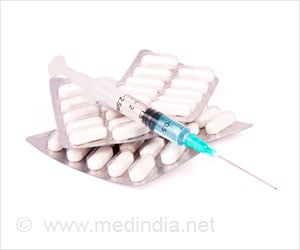Study identifies those at risk for overuse of opioids, improve pain control and decrease dependency of long-term opioid use.

People with the inherited disorder have misshapen red blood cells that clog blood vessels, causing chronic pain and episodes of severe pain that frequently send patients to emergency rooms.
Their study, published in The Journal of Pain, adds to efforts to better identify those at risk for overuse of opioids, improve pain control and decrease dependency and side effects of long-term opioid use.
"We showed that the way we think about pain is associated with opioid use even if our pain levels are low," says Patrick Finan, Ph.D., assistant professor of psychiatry and behavioral sciences at the Johns Hopkins University School of Medicine. "These data argue that physicians need better communication with patients on how to take their medications from day to day to minimize fluctuations based on mood or way of thinking."
Sickle cell anemia and opioid
Patients with sickle cell disease are commonly prescribed a daily, long-acting painkiller taken at a constant dose, and a short-acting painkiller to be taken as needed for episodes of more severe pain. Long-acting drugs include morphine, oxycodone, methadone and a fentanyl patch, and rescue pain killers include oxycodone, hydromorphone, meperidine, tramadol and hydrocodone.
Advertisement
For their analysis, the researchers included only 45 participants, those who filled out the diary more than 25 percent of the time and had taken opioid pills at least once during the study period. Participants were an average age of 37; 71 percent were women and 93 percent were African-American.
Advertisement
Separately, the researchers measured negative thinking (different than negative emotions) by using a Pain Catastrophizing Scale to rate "rumination," or focus on pain, helplessness and magnification of a current pain situation.
Study findings
Among the 31 participants who took long-acting, daily opioids, negative emotions were associated with increased levels of using opioid pills. Opioid dosage increased by 3.4 morphine milligram equivalents ¾a standard measurement that compares dosages between various opioids¾for every 10-point increase of negative emotions. Daily pain level, positive emotions and negative thinking through catastrophizing did not affect the amount of long-acting, daily opioids taken.
"When someone is prescribed a daily, long-acting opioid, it is typically supposed to be at a fixed dose and their pain level or emotions shouldn’t dictate whether they take more of this prescription or not," says Finan. "Although we can’t prove misuse of the medication in our study, these data suggest that physicians and patients should clearly communicate about how patients should be taking their daily, long-acting opioids in order to minimize the potential for misuse."
When looking at levels of short-acting opioids taken at times of pain, the researchers found that pain levels and negative thinking by catastrophizing were associated with levels of short-acting opioid use. For every 10-point increase on the pain scale, the amount of short-acting opioids increased by 1.8 morphine milligram equivalents, and for every 10-point increase on the catastrophizing scale, pain medicine dosage increased by 2.5 morphine milligram equivalents. Positive and negative emotions had no effect on the use levels of short-acting opioids.
"When pain was reported as low, sickle cell disease patients reported higher opioid use if they catastrophized, or focused their thinking on their pain, than if they didn’t," says Finan.
"When pain levels were higher, negative thinking played less of a role in influencing opioid use," he adds.
Finan cautions that studies such as his have some weaknesses, including the fact that self-reports are always uncertain, and the study only looked at one time point per day, although a person’s mood may fluctuate throughout the day based on life events and experiences.
For future studies, Finan wants to use smartphone technology that can assess moods randomly throughout the day.
"Once we have a more intensive study to track mood variations throughout the day, then we can determine when it will be appropriate to send messages through text to intervene and affect patient behavior," Finan says.
About 100,000 Americans have sickle cell disease, or one out of every 365 births in African-Americans, according to the Centers for Disease Control and Prevention.
Source-Eurekalert











